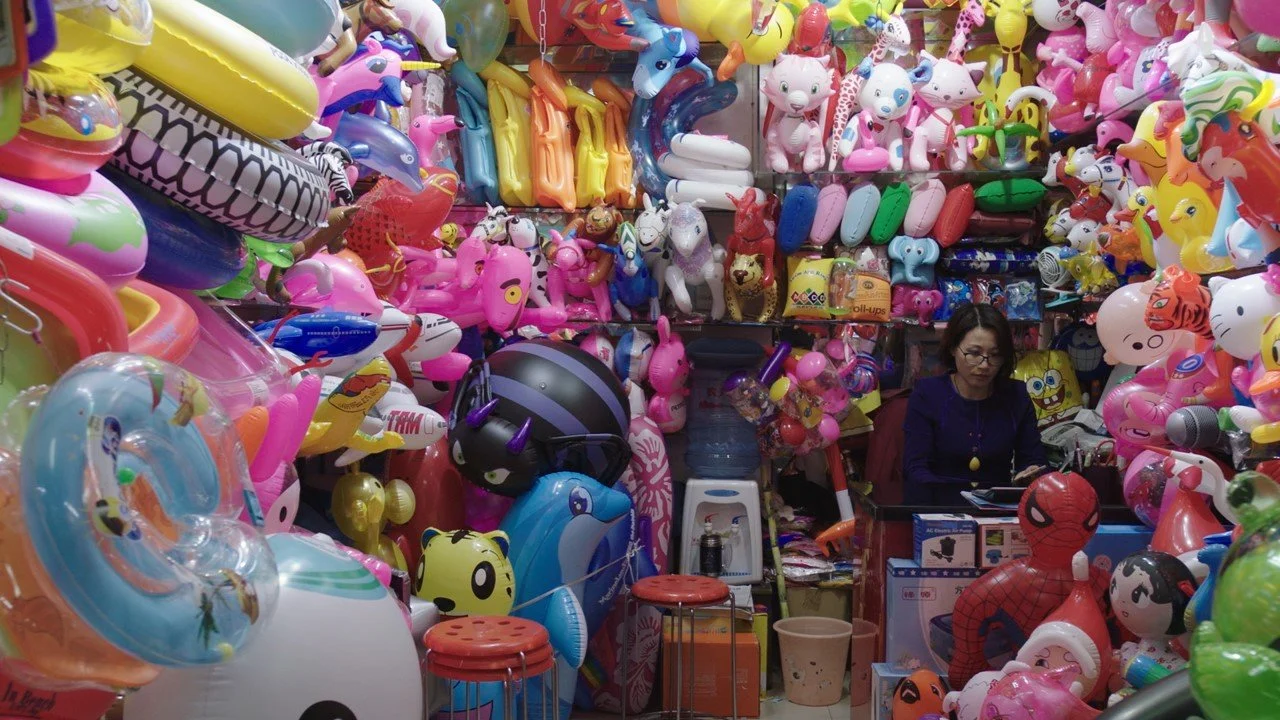The Contemporary Jewish Museum Announces Mika Rottenberg: Spaghetti Blockchain
Mika Rottenberg, Cosmic Generator (video still), 2017. Commissioned by Skulptur Projekte Münster. Produced with generous support from Louisiana Museum of Modern Art, Humlebæk, Denmark; Outset Contemporary Art Fund, London, U.K.; and Polyeco Contemporary Art Initiative. Piraeus, Greece, © Mika Rottenberg. Courtesy the artist and Hauser & Wirth.
The Contemporary Jewish Museum (The CJM) is pleased to present Mika Rottenberg: Spaghetti Blockchain, a major solo exhibition by the New York-based artist on view May 18-October 22, 2023. The exhibition brings together Rottenberg’s most prominent video, installation, and sculptural works from the past decade, which playfully reveal that life in a globalized economy is more bizarre than we can possibly imagine. The exhibition, which is curated by CJM Senior Curator Heidi Rabben, marks the first museum survey of the artist’s work ever to be presented on the west coast.
“Mika is a groundbreaking contemporary artist, who is leading innovation in media art today,” said Rabben. “We are so excited to present this major survey of her work, which grapples with some of the most complex ideas and systems shaping our culture both locally and globally. Her work exposes the extremes of our globalized society, and proposes new ways to think critically and joyfully about how to exist more responsibly.”
The exhibition will include Rottenberg’s three most recent immersive video installations — NoNoseKnows (2015), Cosmic Generator (2017), and Spaghetti Blockchain (2019) — as well as a series of related kinetic and interactive sculptures. On the occasion of the exhibition, The CJM will also co-present an offsite screening of Rottenberg’s very first feature-length film, REMOTE (2022), on September 9, 2023 at the San Francisco Museum of Modern Art (SFMOMA) in the Phillis Wattis Theater. After the screening the artist will be joined in conversation by Christopher Bedford, Helen and Charles Schwab Director of SFMOMA.
Mika Rottenberg, Spaghetti Blockchain (video still), 2019. Produced by Museum of Contemporary Art Toronto; Arts at CERN, the arts program of the European Laboratory of Particle Physics, Geneva, with the support of the Permanent Mission of the United States to the United Nations, Geneva; Sprengel Museum Hannover, with the support of Niedersächsische Sparkassenstiftung; and New Museum, New York. © Mika Rottenberg. Courtesy the artist and Hauser & Wirth.
Rottenberg often uses the term “social surrealism” to describe her visionary approach to art making, implying that embracing the bizarre in her work serves to reveal just how disorienting aspects of contemporary reality often are. Each of Rottenberg’s primary video works is situated within a theatrical installation, featuring items as disparate as sacks of pearls, inflatable pool toys, and plastic flowers. In Spaghetti Blockchain (2019), Rottenberg creates an autonomous sensory meridian response (ASMR) environment inside the European Organization for Nuclear Research (CERN) Large Hadron Collider, exploring the scientific connection between human- and machine-produced sensation. With her video work Cosmic Generator (2017) Rottenberg offers an analogy between migration issues and the large-scale production and circulation of goods — underscoring the illogical nature of a society that favors and facilitates the entry of cheap objects but restricts the movement of human beings. In NoNoseKnows (2015), a subversive allegory of labor practices filmed in Zhejiang province in China, Rottenberg manifests the imagined dynamics between a pearl factory and its Western supervisor, who, with every sneeze, inexplicably produces a plate of pasta.
A selection of sculptural works that blur the line between humans, machines, and nature both complement and complicate the video narratives on view. With these works, Rottenberg explores the physical and metaphorical distance between human labor and mechanical production. Isolated bodily extremities like elaborately-manicured fingers comingle with gears, cranks, and live plants to create a Rube Goldberg-like array of delightfully futile mechanisms. Some appear automatic or almost sentient, while others require the labor of visitors to activate them, further immersing and implicating them in the process.
Although the world has changed since many of these works were first created, the subjects they tackle have only become more relevant. Questions of labor and human connection explored in this exhibition have intensified and taken on uncanny new resonances in a world suspended between pandemic and endemic conditions. The circumstances of characters in the video works navigating extremely confined spaces like tunnels and overcrowded kiosks, or sneezing absurd objects into existence, feel all the more resonant as the world continues to process the impacts of forced isolation, notions of proximity and contagion, and the disruption to supply-chain systems. By creating immersive films and interactive sculptures, Rottenberg encourages visitors to engage physically with her works, urging us to think more deeply about the processes that surround us, and our role as workers, consumers, and participants in the global systems we often overlook.


